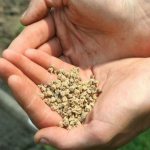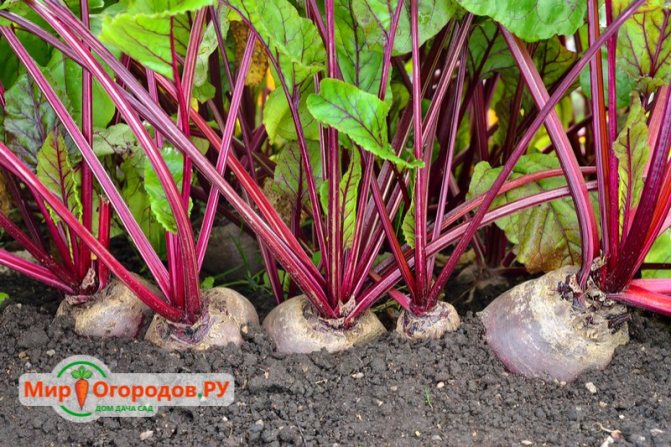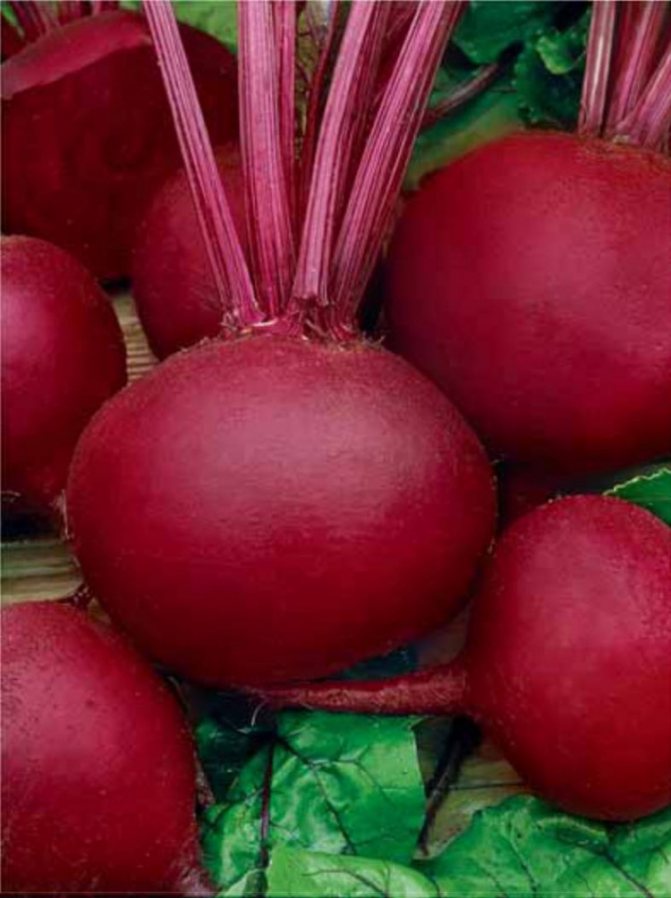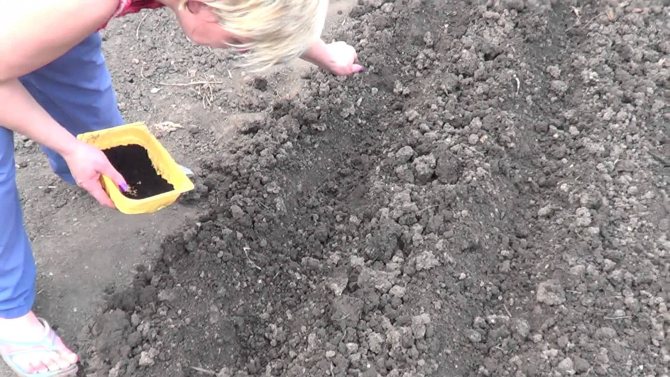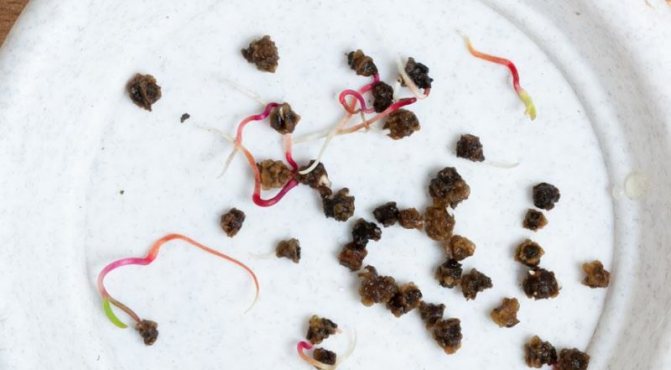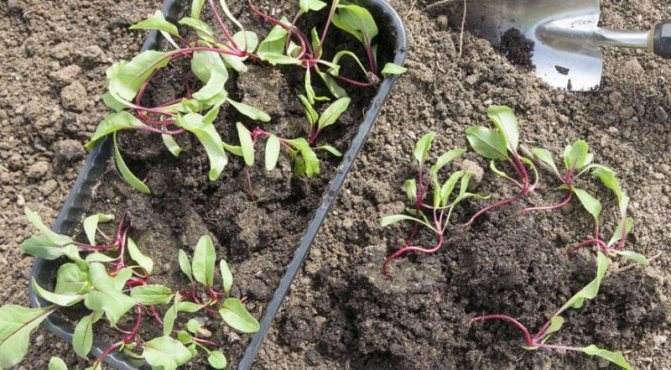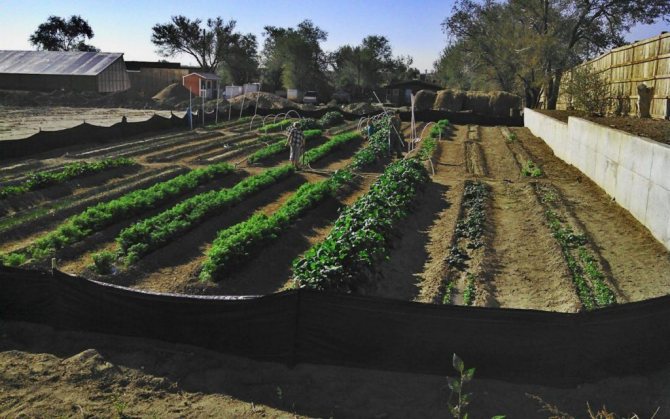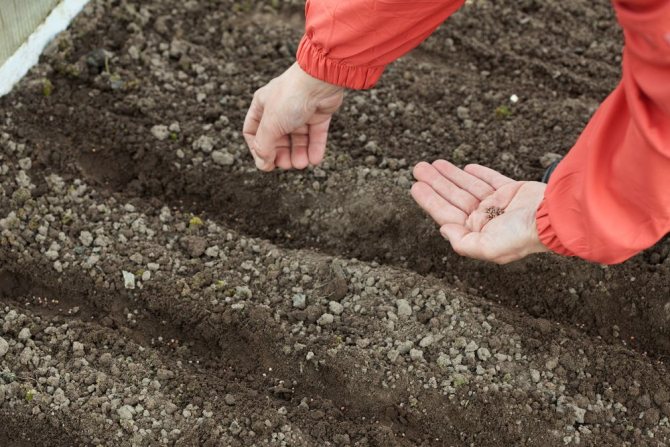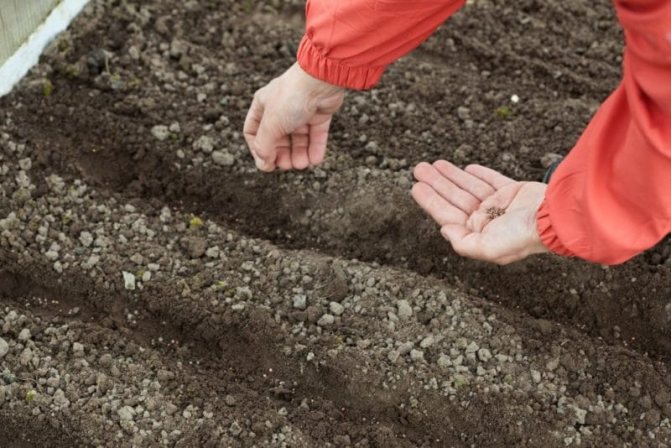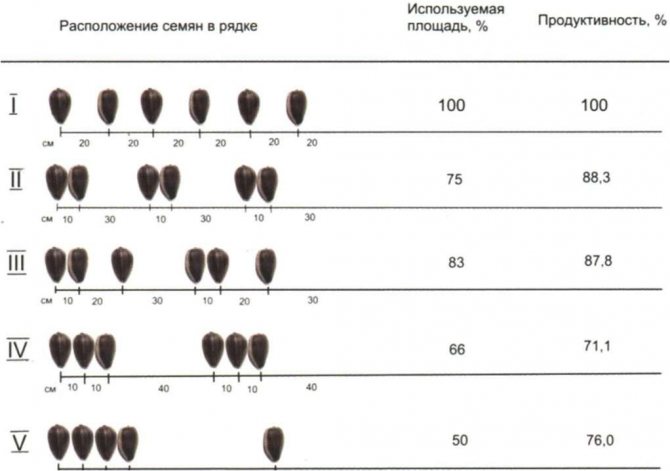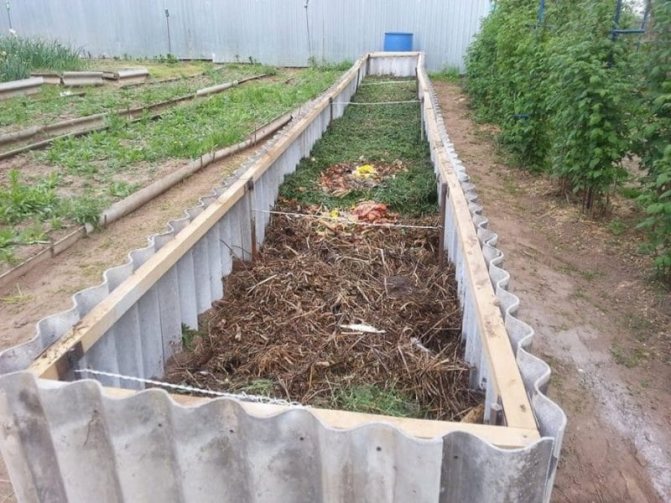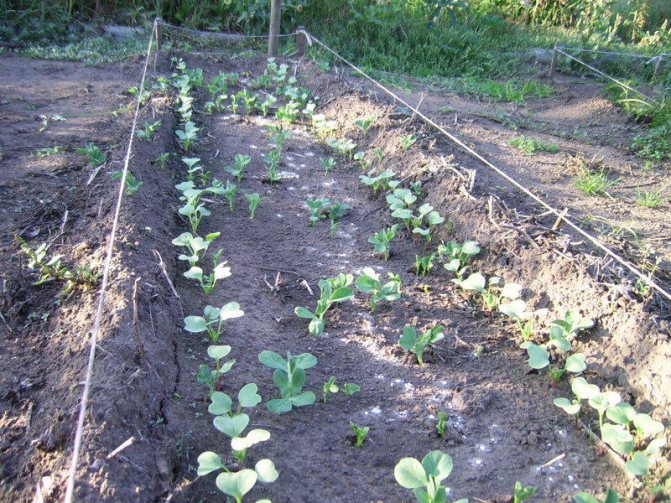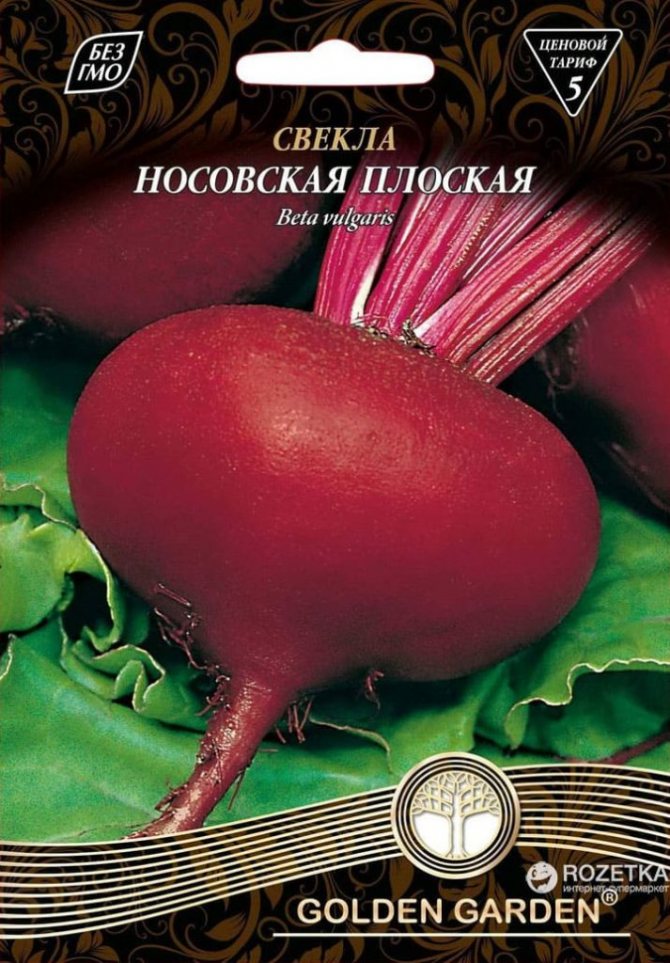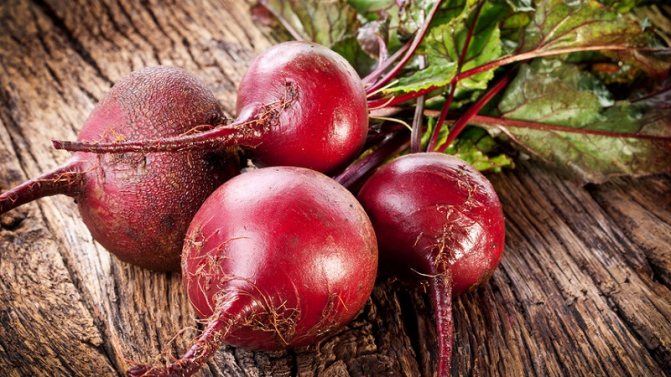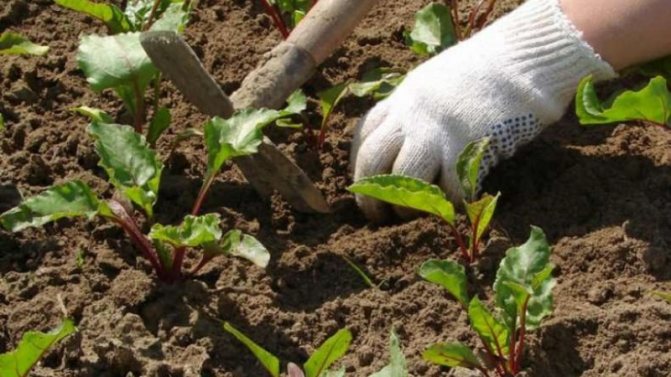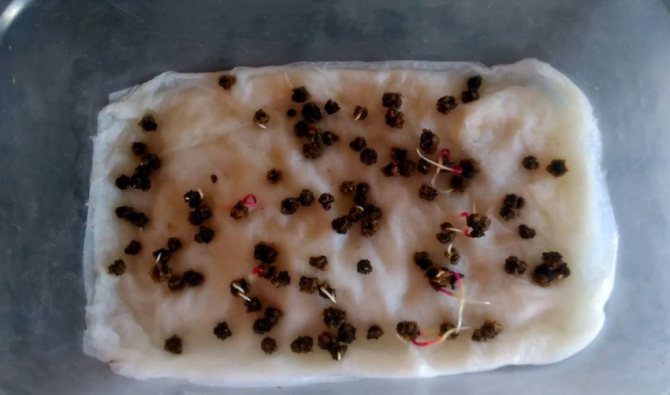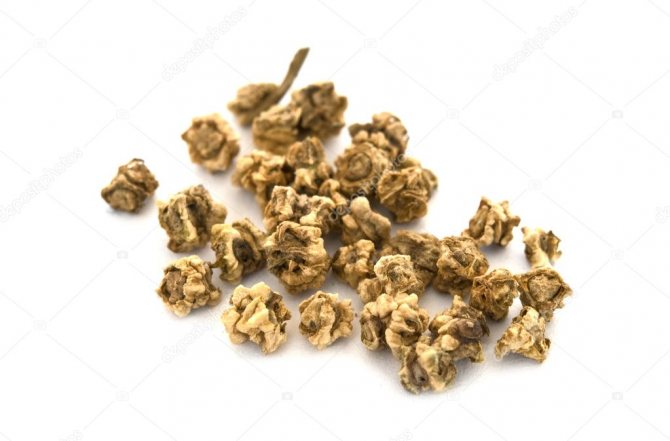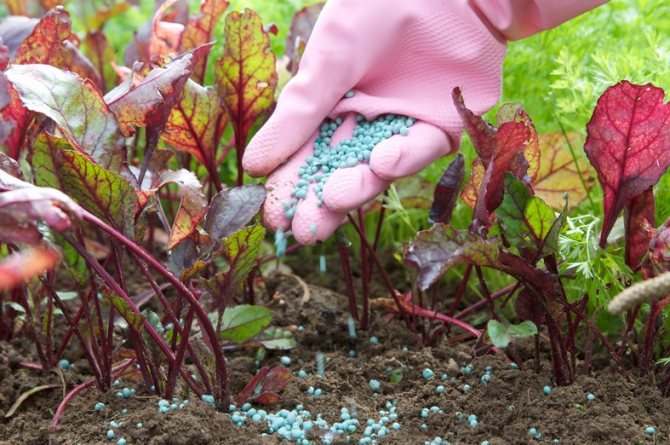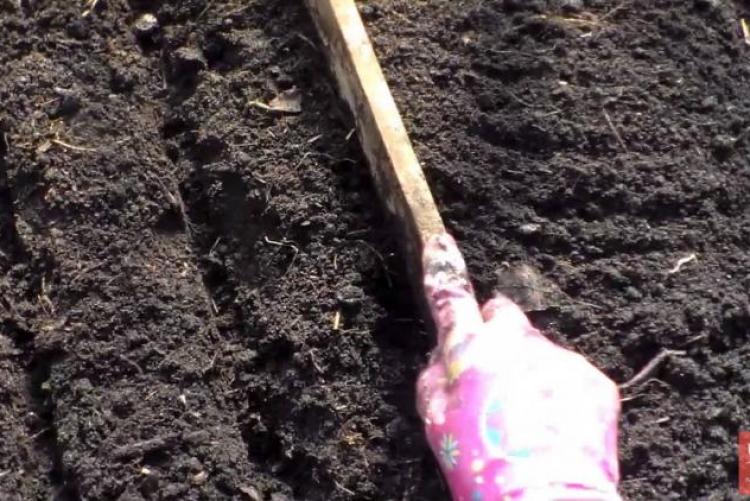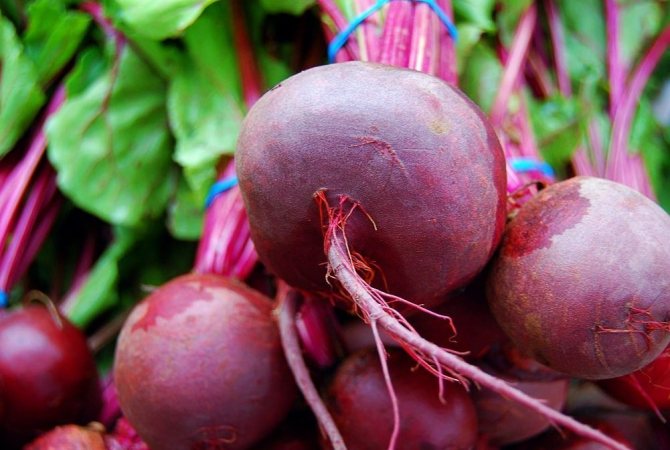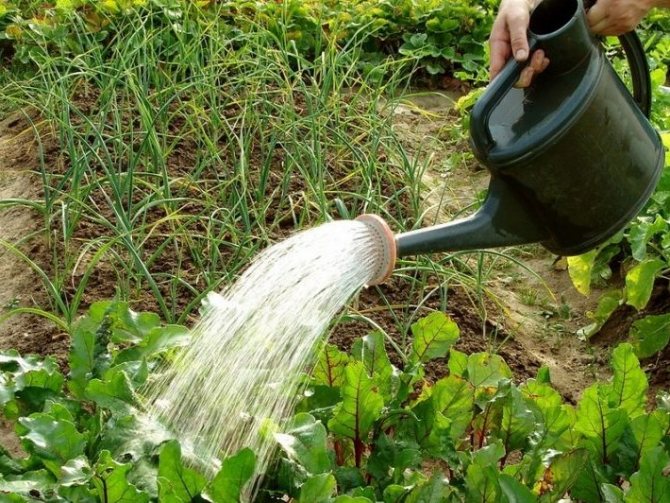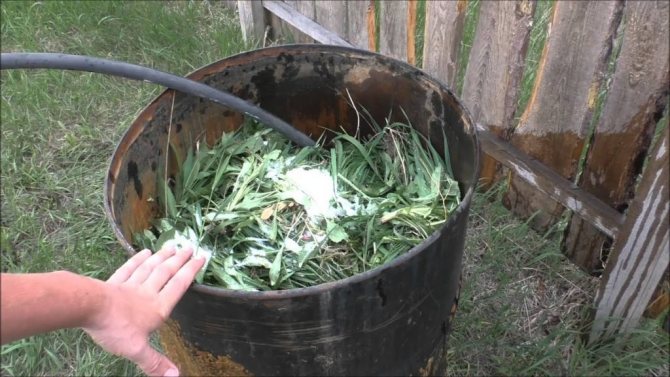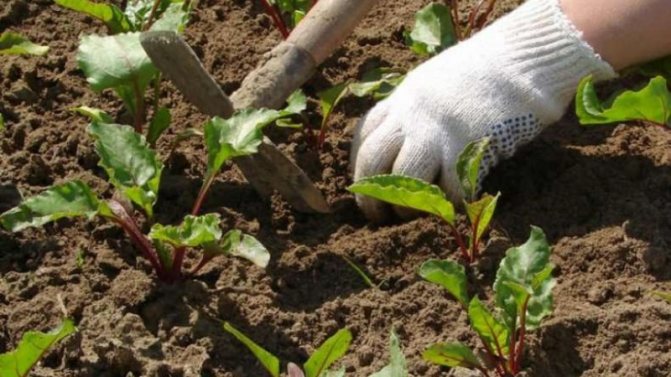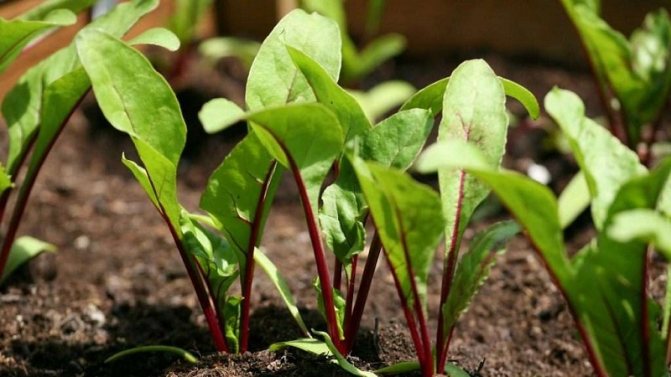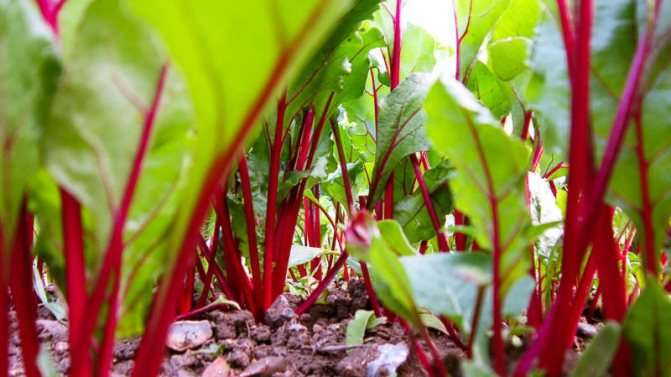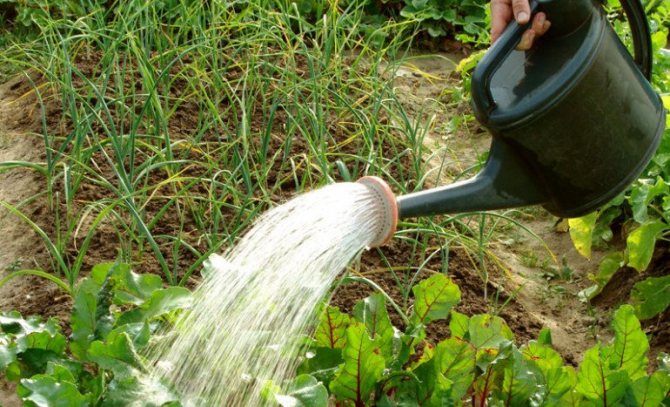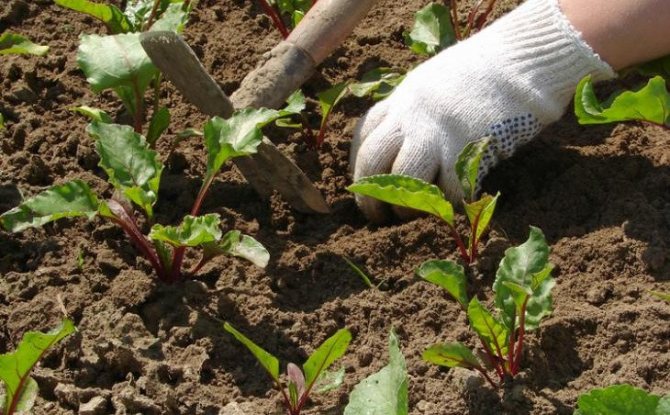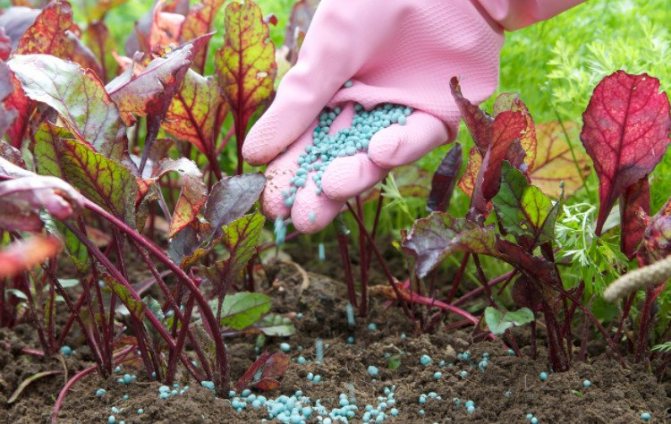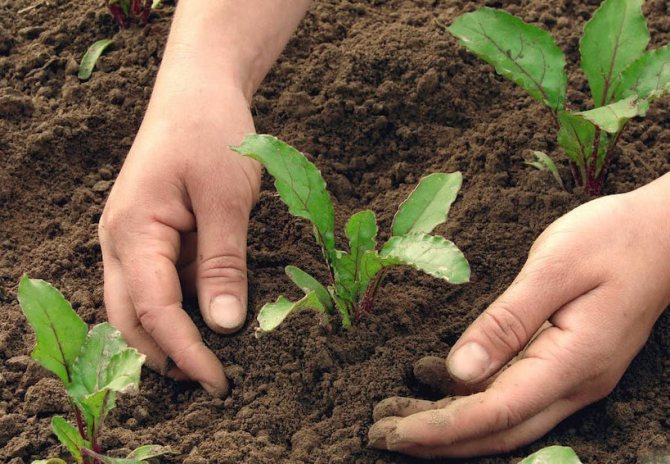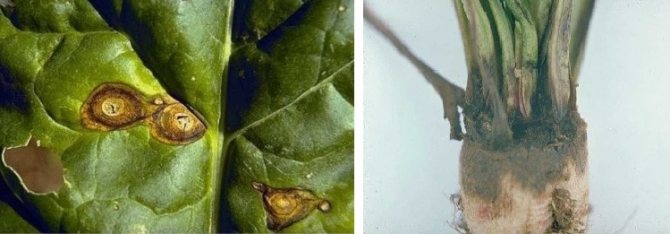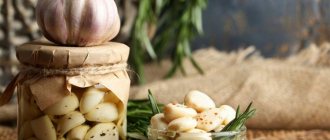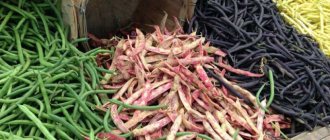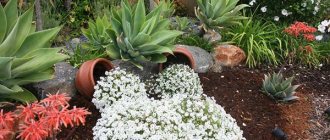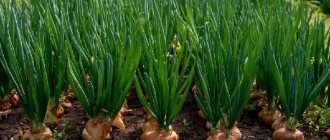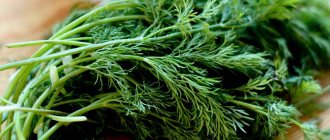Author rating
The author of the article
Yakov Pavlovich
Professor, Head of the Department of Vegetable Growing
Articles written
153
Beets are a vitamin culture, without which it is difficult to imagine a vegetable garden. The vegetable is not only good for the human body, but also completely edible, including the leaves. Beets are used as salads, side dishes and first courses. Also, the root vegetable is consumed both raw and boiled.
Planting beets with seeds in open ground can be done even by a beginner in gardening. It is only important to know some of the nuances.
Dates of sowing beets in open ground
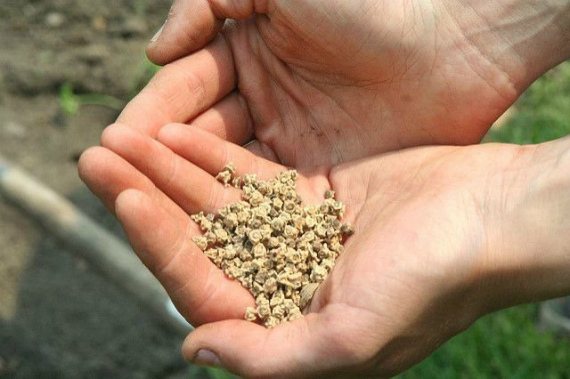
Planting dates depend on many factors - on the varietal affiliation of the plant, on the climate and weather in the region, on the requirements of the vegetable crop and on its purpose after harvest (for quick use or for long-term storage).
For early varieties, planting dates should be early, and for later varieties, later. The main thing is to stop night frosts, because beets react very badly to sudden drops in temperature, especially at night. And the soil by this time should be stable in temperature - about eight to ten degrees Celsius.
Air temperature is also of great importance for sowing seeds, or rather, for the time of seedlings emergence.
If the air warms up to five degrees, the sprouts will appear only after fifteen to twenty days, up to ten degrees - in ten days, up to fifteen degrees - five days, and at twenty and above - you will have to wait no more than three to four days.
Sowing beets, taking into account the region
Depending on the climatic conditions of their area and the prolonged cold weather, seeds are sown from March to July, choosing the right varieties for ripening periods. For example, late varieties cannot be sown in summer in cold climates because they will not mature in time.
- In the Kuban, Krasnodar and other southern regions with a stable warm climate, sowing is carried out in March - April.
- In Siberia and the Urals, a favorable time for sowing will be the second half of May (after the 20th) and the first half of June (until the 15th).
- In the Moscow region, it is better to sow seeds in the first half of May (until the 20th).
When to sow beets in 2020 according to the lunar calendar
Many summer residents and gardeners adhere to the recommendations of the Lunar calendar, which advises not to use the full moon period for planting, and also indicates the most successful days for these works.
Days are considered auspicious:
- 10, 11, 12, 15, 16, 17, 23, 24, 25, 27, 28, 29, 30 – in March;
- 2, 3, 4, 5, 6, 7, 8, 9, 11, 12, 13, 14, 15, 24, 25, 26, 27, 29, 30 – in April;
- 1, 2, 3, 4, 12, 13, 14, 21, 22, 23 – in May;
- 9, 10, 11, 18, 19, 20 – in June;
- 25, 26, 27, 28, 29, 30, 31 – in July.
It is not recommended to plant beets: March 6, 7 and 21, April 5 and 19, May 5 and 19, June 3, 4 and 17, July 2, 3 and 17.
Growing features
Beetroot is a vegetable crop enriched with useful elements. With proper planting and proper care, root crops grow large and have excellent taste. It is necessary to grow in compliance with the cultivation characteristics.
On a note! If you need to plant seedlings of beet culture in the spring in the garden, then the best period for this is May 14-16.
However, this must be done according to the rules. It is important to harden the plants, as well as follow simple recommendations. Only in this way the move will be painless. It is of paramount importance to choose the right place for the vegetable:
- The fruit needs space, therefore, the less often the sprouts are from each other, the larger the vegetable will be in size.
- If a large harvest is needed, then they are planted next to other vegetables: potatoes, beans, cucumber varieties.
- The garden should be fully illuminated, next to the water source, but it is imperative to equip the drainage.
- It is wrong to plant beet varieties in the same garden for two years in a row.
- You can plant beets after onions, tomatoes, garlic, potatoes, eggplants, courgettes and carrots.
To harden the plant, the seedlings should be taken out for a quarter of an hour in a shady place. However, this can be done only after 2-3 true leaves have grown, when the weather settles. The time spent on the street should be increased. However, it is still necessary to avoid direct sun exposure to the sprouts. At the last stage of hardening, it is already possible to leave the seedlings for 24 hours. Sun exposure is not dangerous, but it is better not to overexpose.
How to properly sow beets in open ground
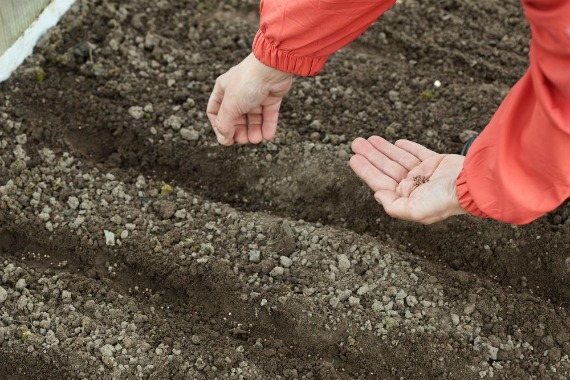

Landing site selection
Beet beds should be located on the south side of the garden or simply in an open area, with enough light and warmth throughout the day. Shade or partial shade is not allowed - this will affect the full development of root crops.
For watering a moisture-loving plant, it will be convenient if there is a water source nearby. But planting beets on a hill is not desirable, since the vegetable will receive less moisture and be exposed to gusts of wind.
Soil preparation
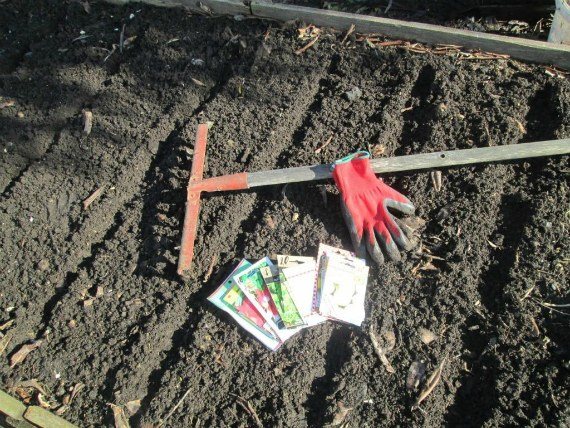

Preparatory work for spring planting must begin in the autumn after harvesting all vegetables from the garden. The first is a deep digging of the site; large clods of earth do not need to be broken so that the soil accumulates sufficient moisture reserves. It is better to collect plant residues and then destroy or use for a compost pit.
Soils, different in structure and composition, require individual feeding and separate procedures.
- For example, in dense clay areas, peat, humus or rotted sawdust are added to the soil.
- Soils with a high level of acidity are recommended to be limed. To do this, for each square meter of land, one kilogram of wood ash or dolomite flour is scattered over the surface.
- Loamy soils require potash fertilizers or superphosphate - about three hundred grams per meter.
- Nitrogen-containing fertilizers are applied to light peat or sandy loam soils, but already in spring, shortly before sowing.
A few days before sowing the seeds in the selected area, the surface of the earth is leveled with a rake and the number of shallow grooves is cut as necessary.
Attention! You cannot use fresh manure as fertilizer, this will negatively affect the quality of root crops.
Preparing beet seeds for sowing
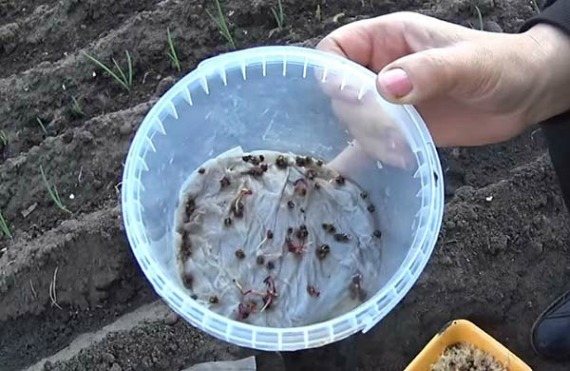

Seeds purchased in specialized stores, in a package with all the data on the collection, date and shelf life, are usually not subjected to any preparation, but sown in the ground in a dry form.
Purchased seeds have already passed disinfection and other types of treatment. Although experienced gardeners believe that dry seeds germinate three times slower than those soaked in ordinary water or soaked in stimulant solutions.
Seed material of own collection, purchased in bulk on the market, from friends it is recommended to be sure to prepare for sowing. First, it is sorted, and then soaked for twenty-four hours in warm water with a temperature of at least thirty to thirty-five degrees, or in any disinfecting, stimulating, nutrient solution.
You can choose one of the options. Each of them will increase germination and add positive energy to the seeds.
- Ash infusion.
- A weak solution of potassium permanganate.
- A solution of one liter of water and half a teaspoon of nitrophosphate (or superphosphate).
- A complex solution of one liter of water, potassium salt and superphosphate (one teaspoon each), hydrated lime (one hundred grams), bird droppings (fifty grams), urea (ten grams).
After soaking, the seeds must be rinsed under running water and dried on paper or cloth.
In regions with short summers, it is recommended to germinate the seed before planting.
Features of sowing beets
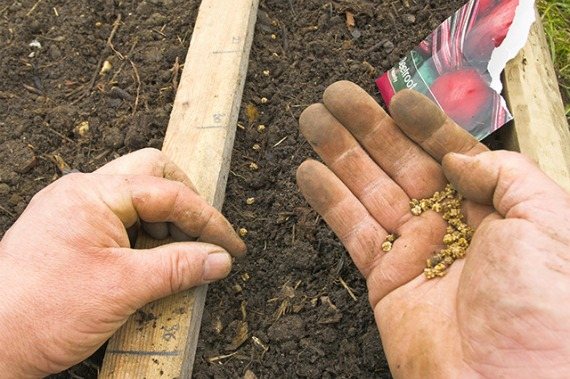

Before sowing, the soil in the grooves is watered abundantly with water, wait until it is completely absorbed, and only after that the seeds are sown.
The distance between the rows is twenty - thirty centimeters, between the seeds - three - five centimeters, the planting depth is about four centimeters.
The seeds are sprinkled with a thin layer of soil or peat, and all the beds are watered again. So that weeds do not interfere with the growth of the weeds, it is recommended to cover the area between the rows with a mulching layer of humus or peat. Mulch not only preserves moderate soil moisture, protects against weeds, but also becomes a source of additional nutrition for plants.
The subtleties of planting beets in open ground - video
Useful Tips
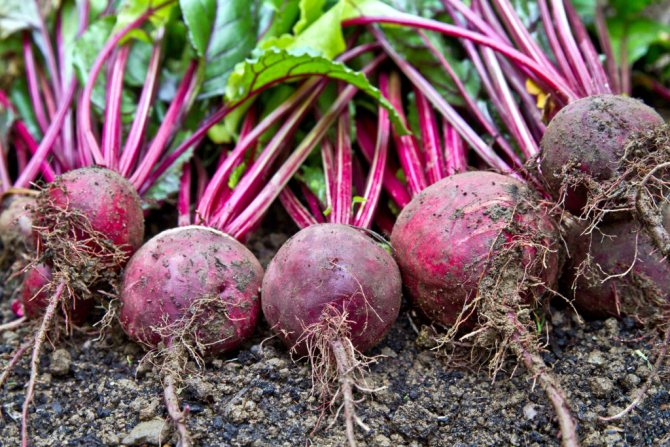

Winter beets may not hatch for various reasons: bad seeds, frozen ground, illegal planting, weather conditions, diseases and parasites. When purchasing seed, you need to pay attention to the shelf life, if the seeds are old, then you should not wait for seedlings. Do not forget about the preservation conditions. To avoid problems, planting material should be bought in large stores.
Another mistake is incorrect seeding. For planting, you need to select soil with drainage and plant, according to the rules of crop rotation. Beet seeds must not be deepened deeper than 20-40 mm. If the ground is light, then deeper is allowed. When the soil is oily, the seed is placed closer to the surface.
Planting beets is a simple process, but it takes time and effort. And you should start with the selection of quality seeds and soil preparation. To get a high yield, you need to consult the lunar calendar. Also, taking into account the astronomical features, you can correctly fertilize and water the garden.
Accounting for plants - predecessors
Good predecessors for beets are:
- squash and squash,
- tomatoes and eggplants,
- sweet and bitter peppers,
- potatoes and peas,
- cucumbers and onions.
But after cabbage sowing a root crop is not recommended, and planting the beets themselves on the same garden bed for the second city in a row is also not advised. The crop will be poor and of poor quality, possibly damaged by pests and diseases remaining in the soil after the previous cultivation of the same plant.
Do I need to pre-soak the seeds
Soaking the seeds is not necessary, but if you want them to germinate faster, then it is still worth doing.
To do this, take one of these tools:
- 1/4 tsp boric acid and 0.5 tsp. nitrophoska or nitroammophoska;
- 1 tsp superphosphate;
- 1 tsp baking soda;
- 1 tbsp. l. wood ash.
For any of the funds, 1 liter of warm water is needed. Soak the seeds for a day. Then rinse them, wrap with a damp cloth and store at room temperature for 3-4 days, making sure that the package does not dry out.
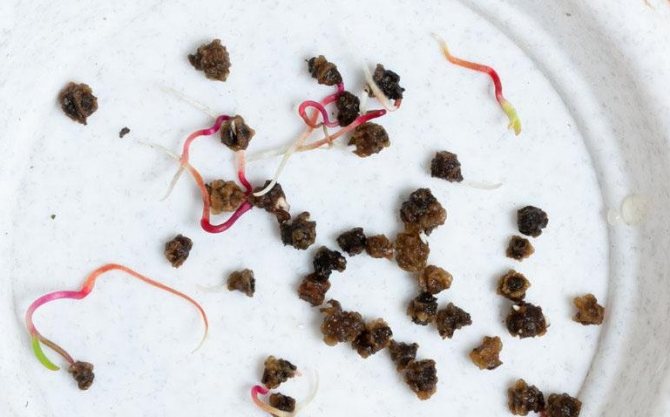

If you are planting seeds in the fall, there is no need to soak them.
Did you know? Beets were held in high esteem by the Romans, they were even collected as a tribute from the subordinates of the Germans. The Romans also used the vegetable as an aphrodisiac.
Seedling care rules
When caring for capricious beets, you must always remember that they really do not like: dry crust appearing on the surface of the earth (due to irregular watering and loosening) and weeds (due to untimely weeding).
Frequency and volume of watering
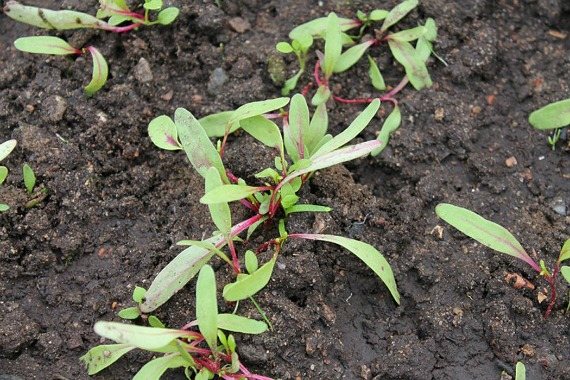

The volume of irrigation water should be such that moisture penetrates to a depth of fifteen to twenty centimeters.In this case, the root system will be provided with all the necessary moisture for growth.
Before the first thinning, watering should be carried out in moderation, and after it - about once or twice every ten days, ten to twenty liters per square meter of land (depending on the composition of the soil and the growing period of the vegetable plant). As the root crop grows, the frequency of watering can be gradually increased.
You should not deny a moisture-loving culture in additional irrigation during dry periods with a long absence of precipitation. Lack of irrigation water will lead to a deterioration in the quality of root crops. They will be small, coarse and bitter.
About ten to fifteen days before harvest, the plants are completely irrigated.
Loosening and weeding of the soil
It is recommended to loosen the soil on beet beds after each watering, and weeding - as new weeds appear. As a preventive measure against weeds, experienced gardeners advise to spray the area immediately after sowing the seeds with tractor kerosene (about fifty grams per meter).
At the initial stage of development of young plants, weed control must be carried out regularly, not allowing it to drown out vegetable plantings.
Thinning crops
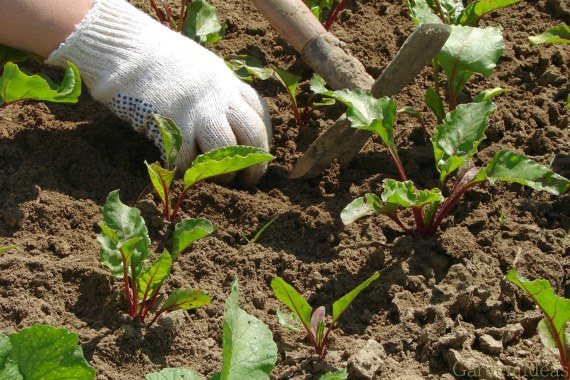

Dense plantations prevent plants from receiving a sufficient amount of nutrients and moisture from the soil, so they need to be thinned out several times (as they grow).
- The first time - after the formation of two full-fledged leaves on the seedlings. The distance between crops is two to three centimeters.
- The second time - after the fifth or sixth sheet, leaving a distance of four to six centimeters.
- The third time - until mid-August, the distance is about eight centimeters.
After the second and third thinning, excess specimens removed from the beds can be planted as seedlings in a separate area.
Use of fertilizers and dressings
For the entire period of growing beets, it is recommended to apply fertilizing and fertilization three times.
- Organic feeding - herbal, ash infusion or chicken droppings (after the first thinning).
Ten liters of water requires one and a half glasses of ash or one kilogram of bird droppings.
- Fertilizers with a high content of potassium and phosphorus - two weeks after the first feeding and immediately after the second thinning.
Alternatively, you can take a saline solution for the second feeding (a large spoonful of salt per bucket of water) or a solution based on a bucket of water and half a teaspoon of boric acid.
Read more in article - Beets: health benefits and harms
Fight disease
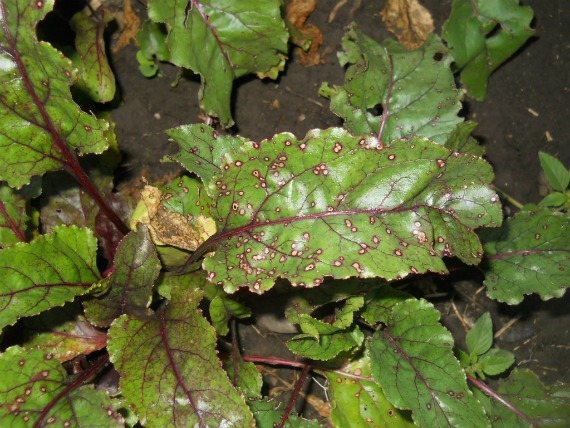

Possible beet diseases - phomosis, spotting, downy mildew, root root, brown rot, felt disease.
When phomosis appears you need fertilizing with boron content - for every square meter, three grams of the substance (this is a solution of ten liters of water and half a teaspoon of the drug). Spraying plants will relieve fungal disease.
With spotting the soil is fed with potassium chloride, and as a preventive measure, before sowing, the soil is treated with a fungicide, and the seeds - with "Agatom - 25".
Special Preventive Measures Help Protect Beets from the appearance of downy mildew. This is soaking the seed in the "Apron" preparation and spraying the newly emerged seedlings with fungicides.
The corneed root can only appear on dense, heavy soils with poor aeration, dry crust on the soil surface, and a high level of acidity. Preventive measures are preparation of the soil for sowing and strict adherence to the rules for caring for crops.
Root crops infected with fusarium must be removed from the garden, they cannot be stored and consumed.It is possible to prevent the development of rot with proper watering, moderate fertilizing (especially with nitrogen) and regular maintenance of the soil in the beds.
Felt disease spreads very quickly when storing root crops from an infected vegetable to a healthy one. They urgently need to be isolated and recycled.
Pest control
The most common beet pests are beet flies and aphids, scoops and fleas. Prevention and control measures - regular weeding, deep digging of the site in autumn, spraying with onion, ash, tobacco infusion or special preparations and solutions: Iskra Bio, Karbofos, Gomelin, Aktofit, Calypso, "Confidor".
Selecting and preparing a place for sowing seeds
It is advisable to decide in the fall on the place where this culture will grow. It must be dug up and dry stems removed. It is desirable that it be well lit by the sun, because this plant loves the sun's rays and warmth. You should not choose places where stagnant water occurs, or marshy areas, in such conditions there is a high probability of root rot.
It is recommended to choose a new place for the garden every year so that the harvest is good.
In terms of composition, the soil should be neutral in acidity, as well as loose so that air circulation occurs. In the fall, feed the land with potash - phosphorus fertilizers.
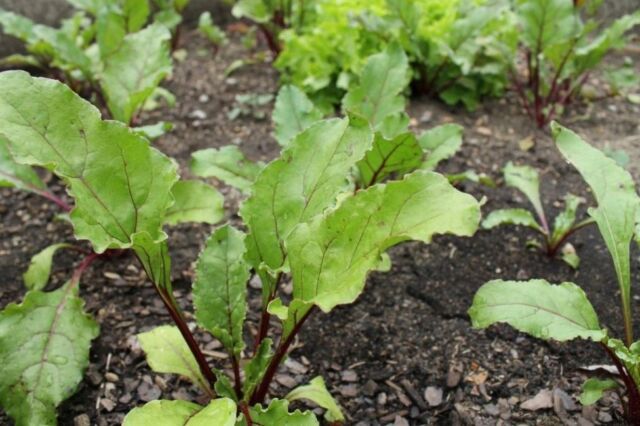

In April, you need to dig up the garden bed, and recharge the soil after winter time. Nitrogen-containing dressings are perfect for this. They will favorably affect seed growth and strengthen the roots well.
Beet harvesting and harvest storage rules
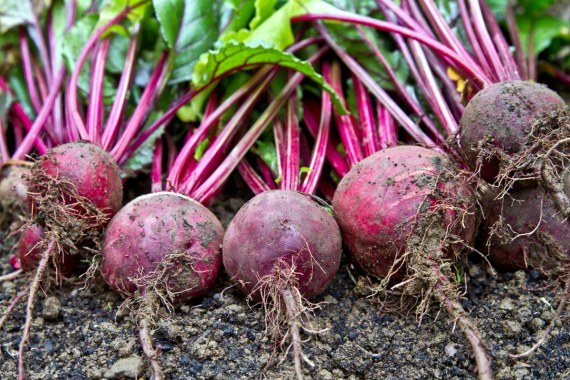

The optimal time for harvesting is from August 20th to September 20th. Yellow or dry beet leaves can serve as a signal for harvesting. For this pleasant procedure, it is better to choose a cool, dry day.
Root crops are removed from the ground, shaken off the adhering soil, cut off the leaves (to a height of about two centimeters petioles) and left in the garden to dry. The next step is sorting. Only copies of one hundred percent quality are set aside for long-term storage, and all the rest are used for processing or another method of quick use (for example, for pet food).
For another one - two weeks, the best root crops should finally dry out, being in a room with good ventilation, and after that they can be transferred to the cellar or basement.
Full-fledged conditions for keeping root crops are temperatures from zero to two degrees Celsius, moderate humidity (no more than eighty percent), good ventilation.
Beets should be stored in wooden or plastic containers with air holes on special pallets or stands. To protect against diseases and rodents, it is recommended to sprinkle root crops with powdered chalk or sprinkle with sand.
Read more in the article: Dressing for beet borscht for the winter - recipes
Possible difficulties
Of the possible problems, the moment is singled out when the seedlings are rapidly stretched out.
Several factors could serve for this:
- planting was carried out very tightly, which led to thickening;
- the seedlings have been at home for too long;
- active watering;
- lack of light.
Knowing the reasons for pulling seedlings, it is necessary to eliminate them in a timely manner. You can transplant to a lighter place, temporarily stop watering. If the reason was overexposure of seedlings at home, then it is recommended to shorten the root, add earth.
Popular varieties of beets for open ground
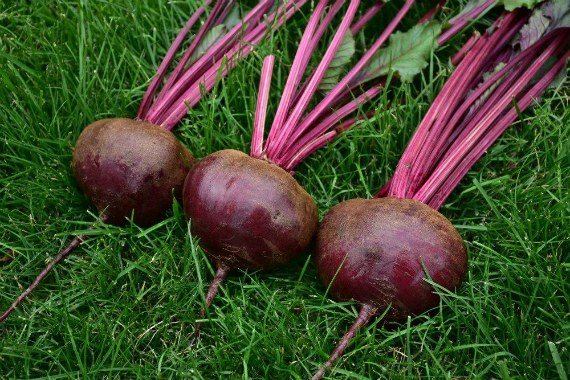

- "Red ball"
An early cold-resistant variety intended for regions with an unstable climate. It takes about three and a half months for the root crop to fully ripen. With an average weight of three hundred grams, the root vegetable has a wonderful sweet taste and a rounded shape.
- "Monocle"
A versatile and medium-ripening variety with an approximate weight of two hundred and seventy grams.The culture does not need thinning, easily tolerates small subzero temperatures and is not afraid of excess moisture. The growing period lasts about four months.
- "Red Bogatyr"
Beetroot belongs to the rich dark varieties. It usually yields a rich harvest in four months. It is a very tasty and nutritious vegetable weighing half a kilogram. Large root vegetables can be eaten raw, as well as after freezing and processing.
- "One-sprout"
A late variety of a round root crop of a dark cherry shade is not afraid of the vagaries of the weather, diseases and pests. Due to the presence of only one sprout after germination, it does not require thinning, and due to its shallow location in the ground, it is easily removed from the soil during harvesting. In four - four and a half months, it reaches a weight of three hundred - three hundred and fifty grams.
- "Incomparable"
The cold-resistant variety, most suitable for long winter storage, is recommended as a therapeutic and dietary food, the most popular in cooking and folk medicine. In four months, root crops reach three hundred to five hundred grams in weight.
- "Red Ice"
The best early variety with high cold resistance and a short ripening period (no more than one hundred days). The average weight is two hundred and fifty grams. Root crops with a dense maroon structure and numerous valuable components do not lose their taste and useful properties during long-term storage.
What is important to consider when choosing a variety for planting?
Particular attention is paid to the ripening time:
- Early ripe. The crop is harvested 50-80 days after germination.
- Mid-season. Fruits are formed in 80-100 days.
- Late. It takes 100 or more days for the vegetables to ripen.
Other parameters:
- The form. It is round, elongated, cylindrical, flattened.
- Purpose. Only beets are used for food. Fodder is raised for livestock. In order to obtain sugar, root crops of the same type are planted.

